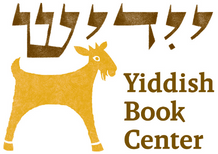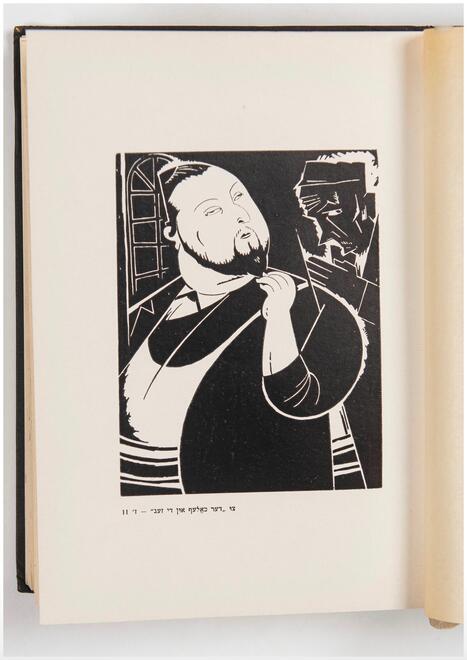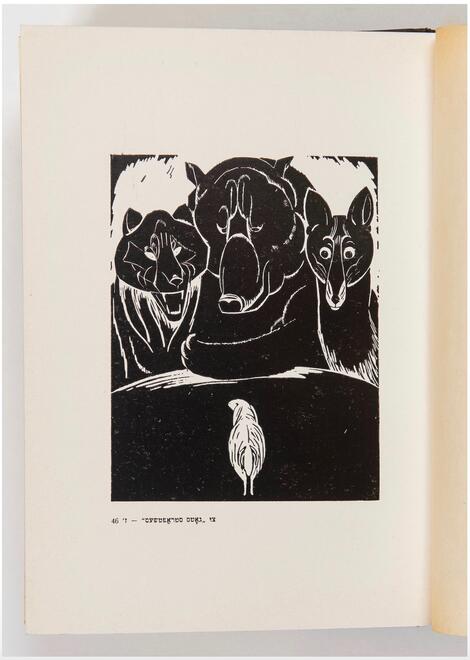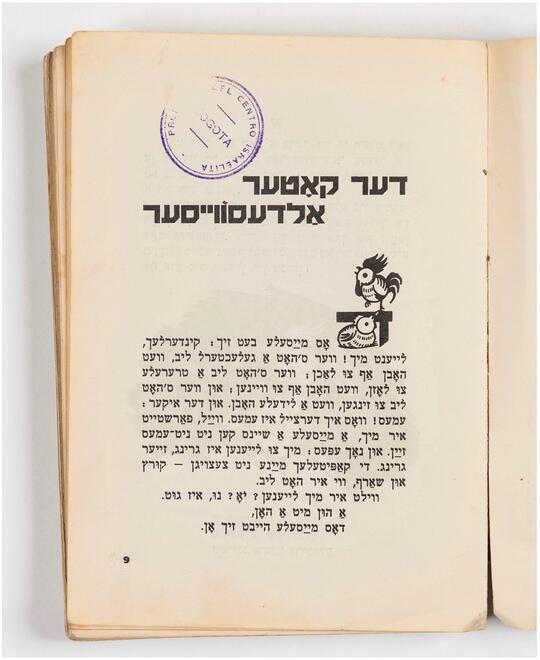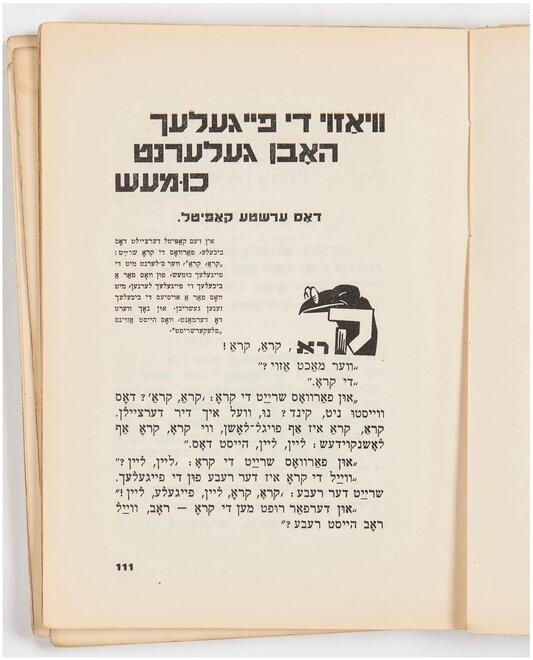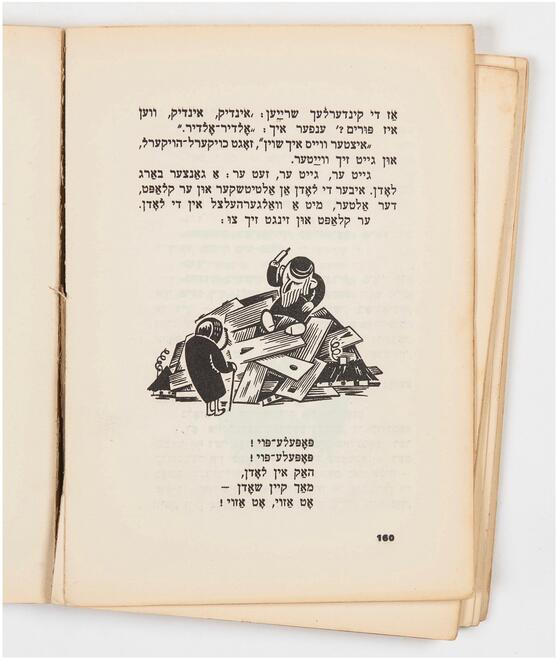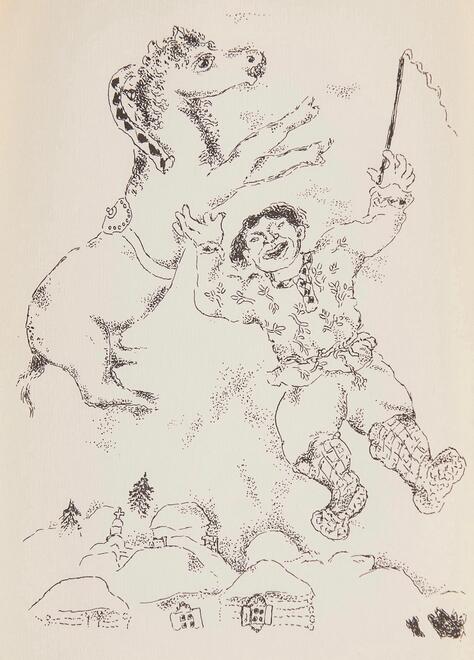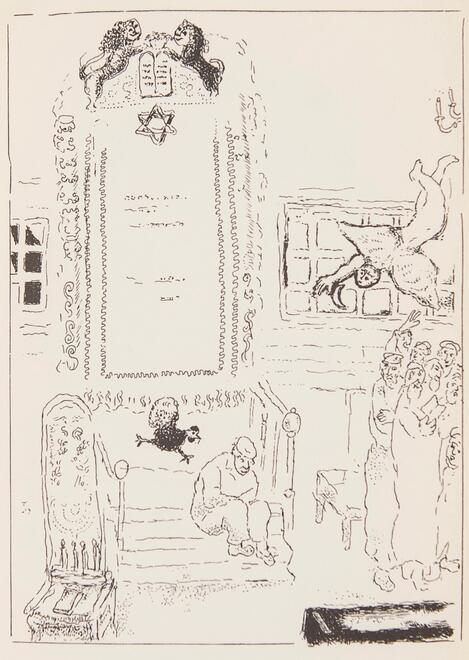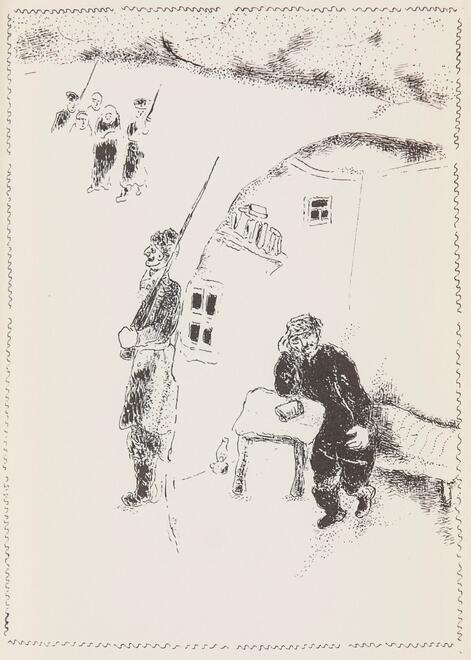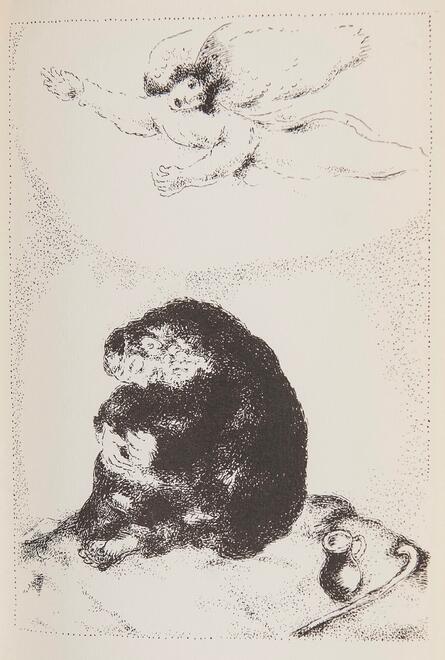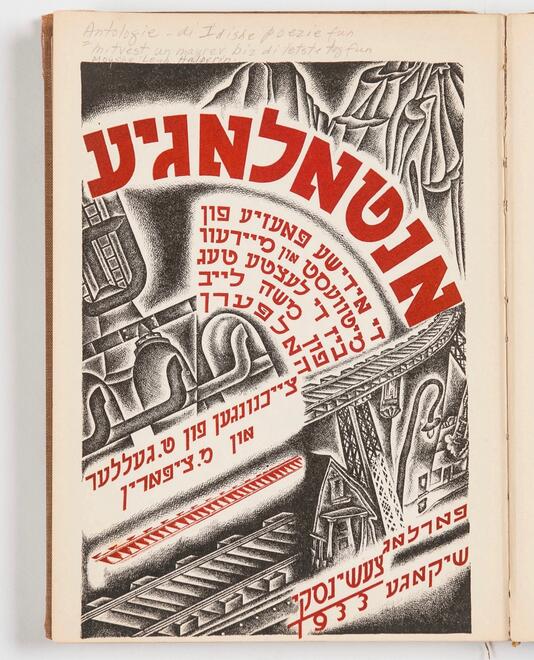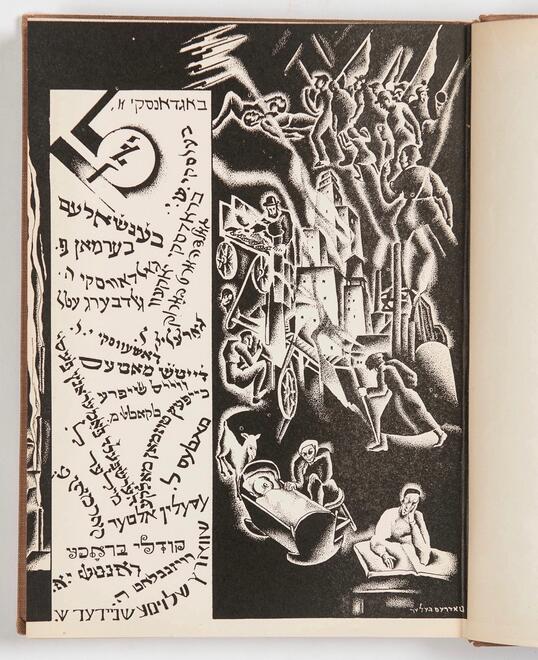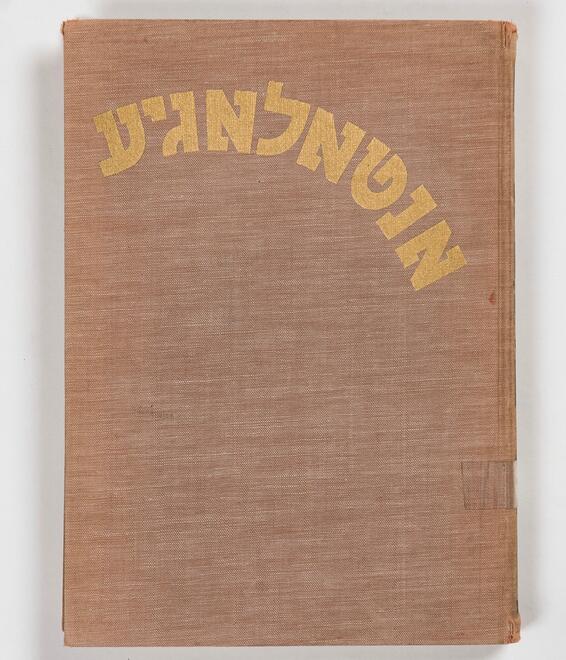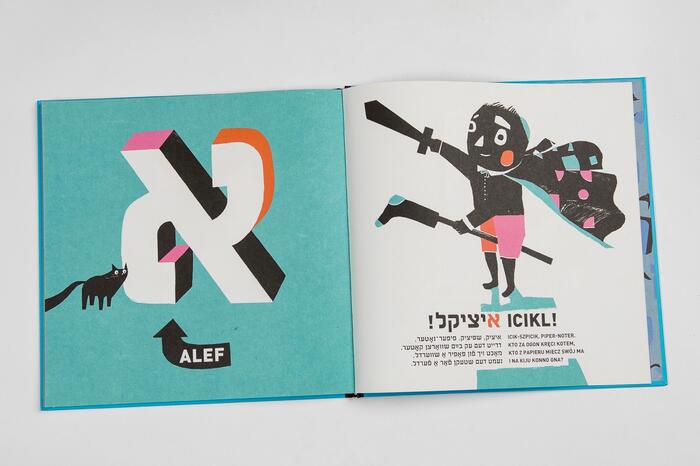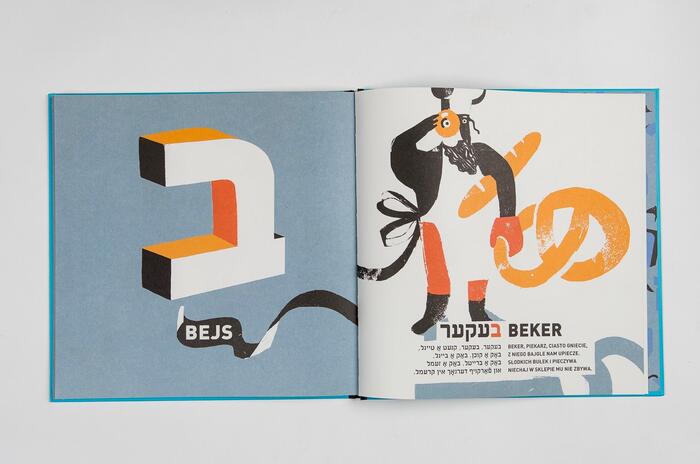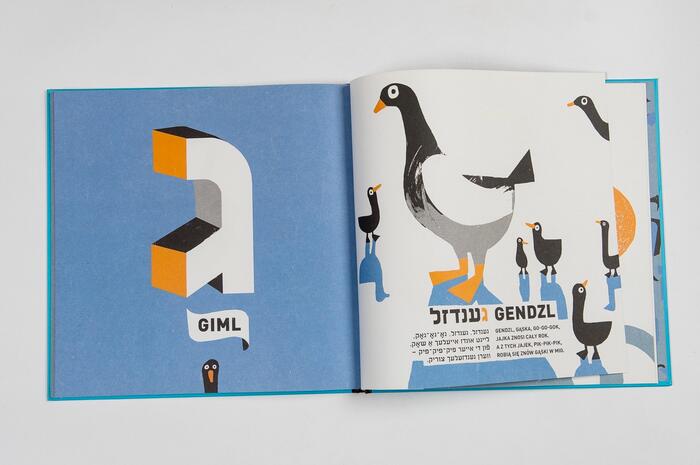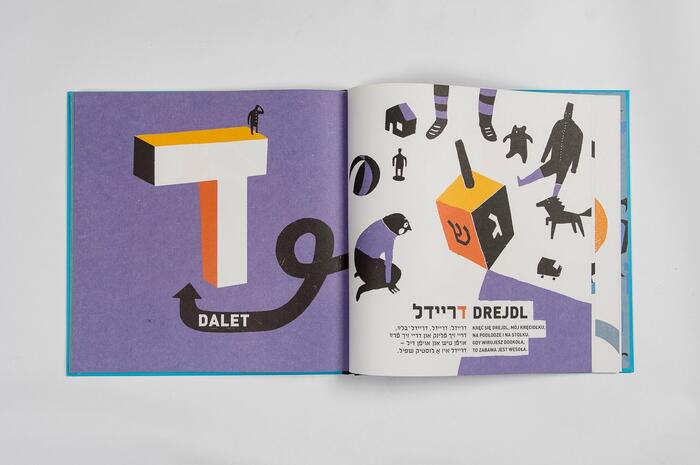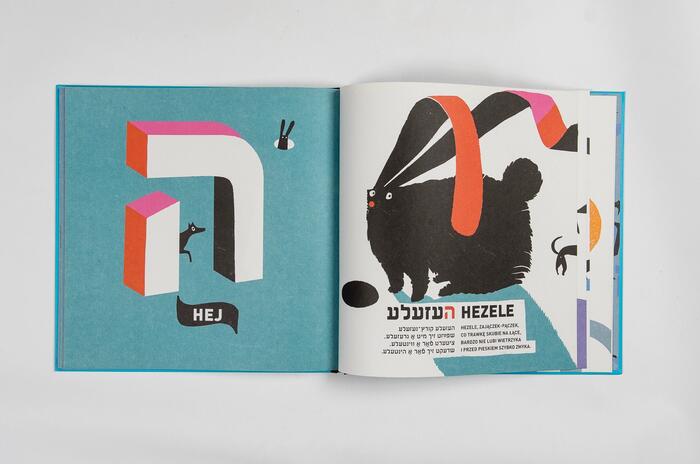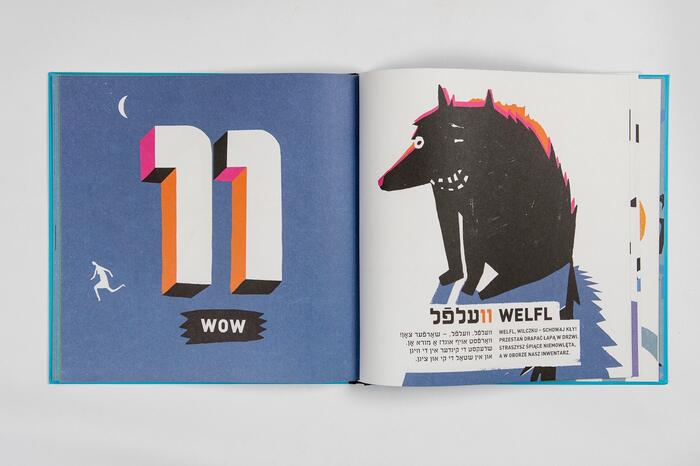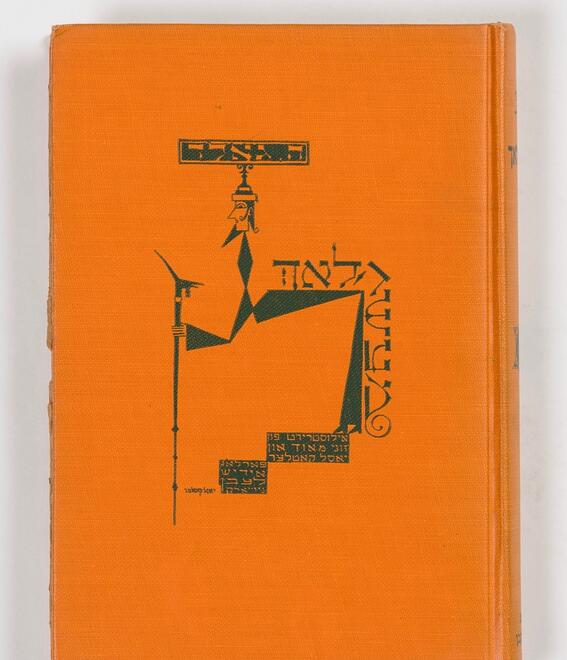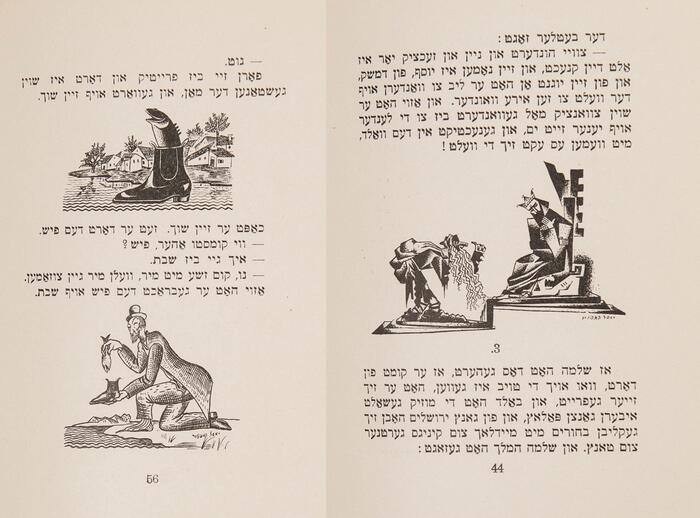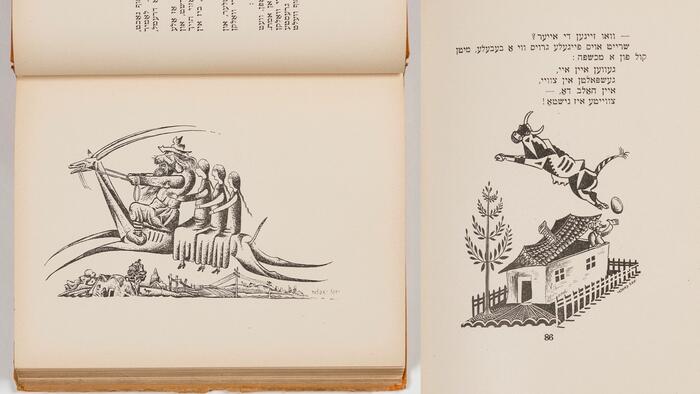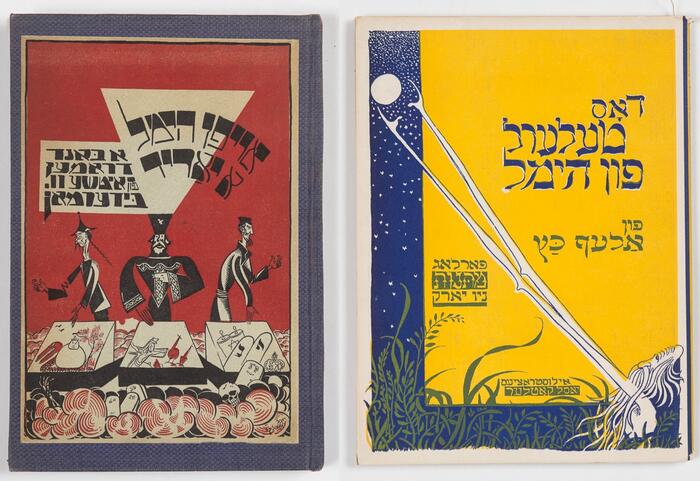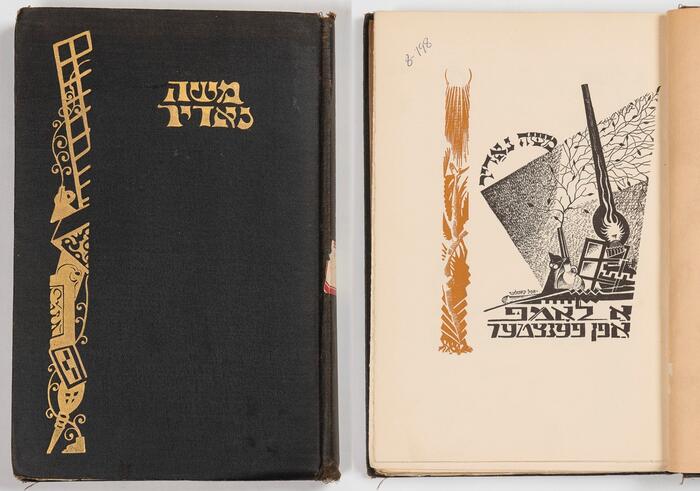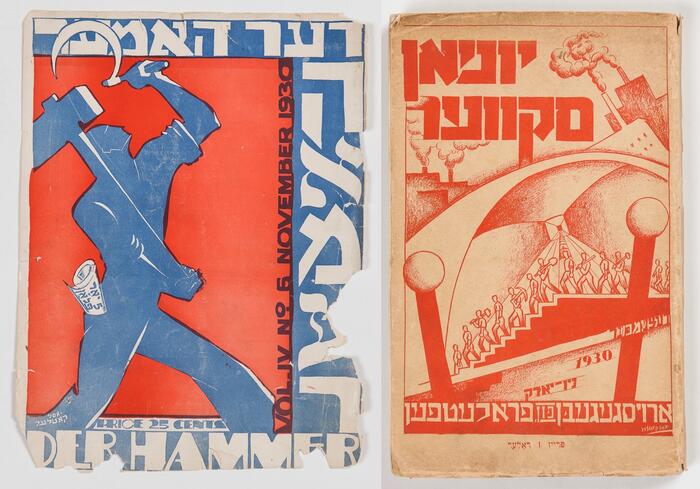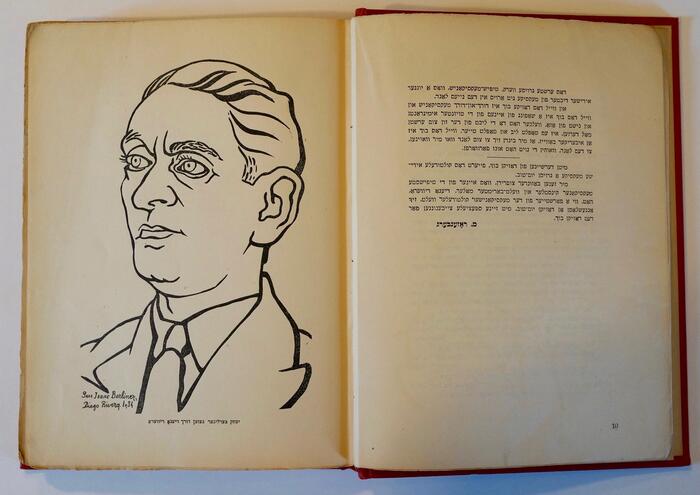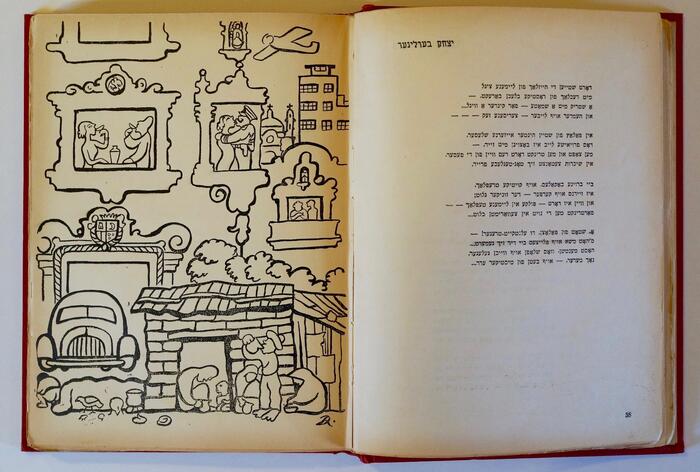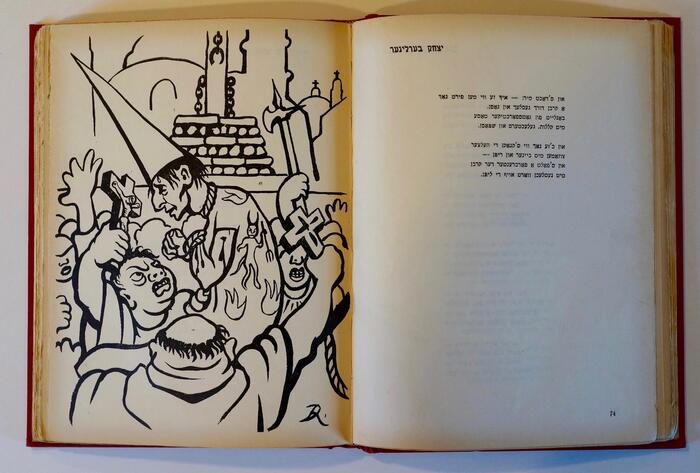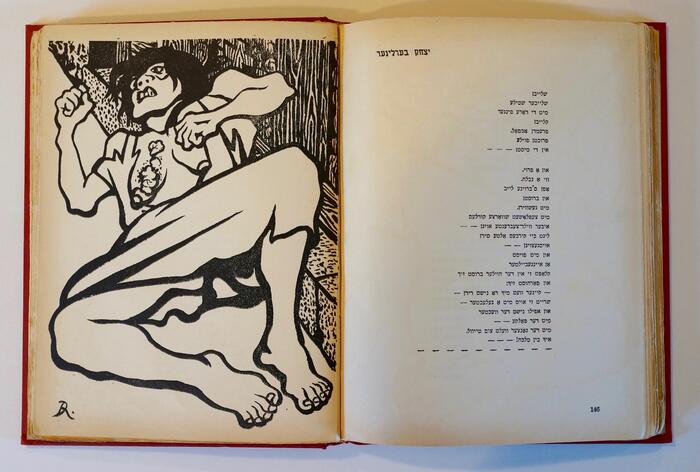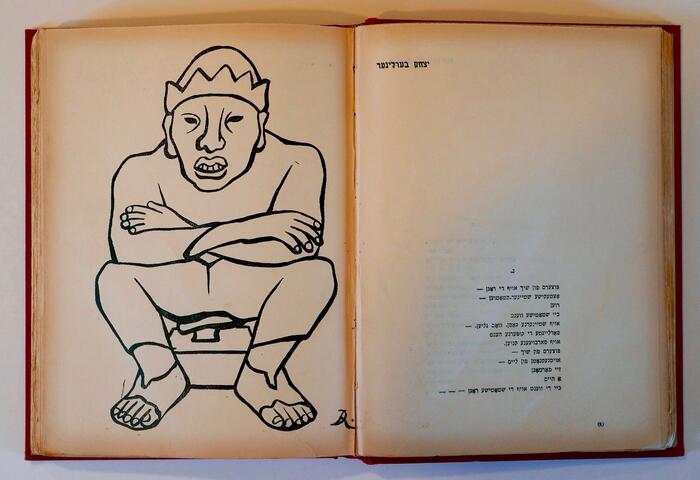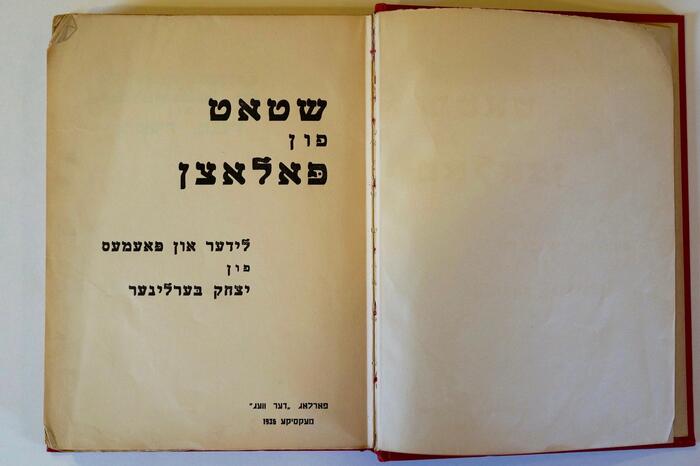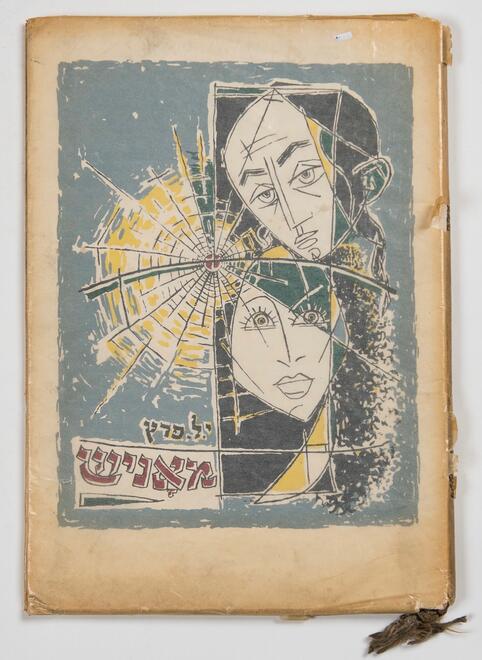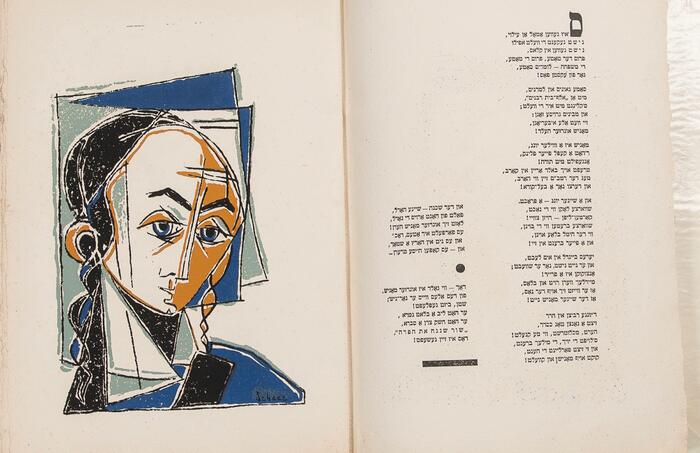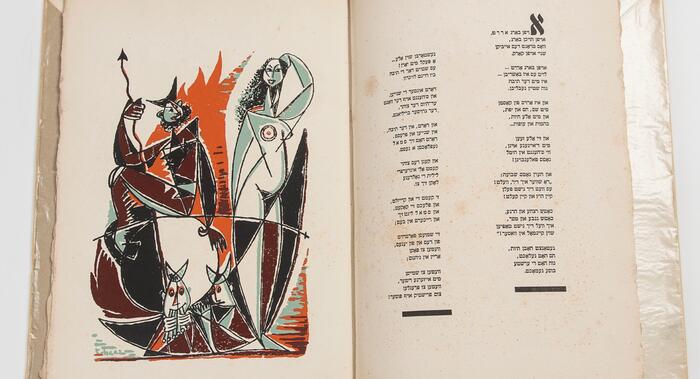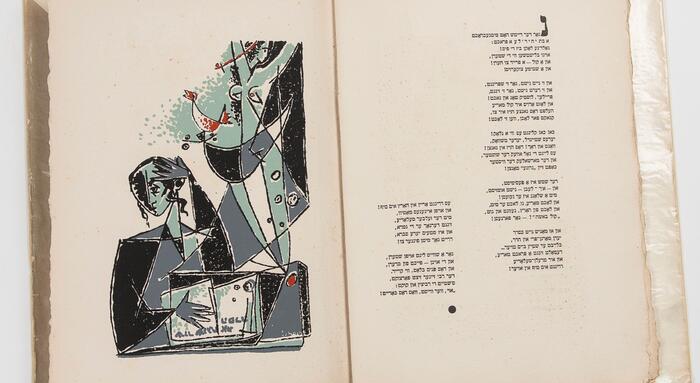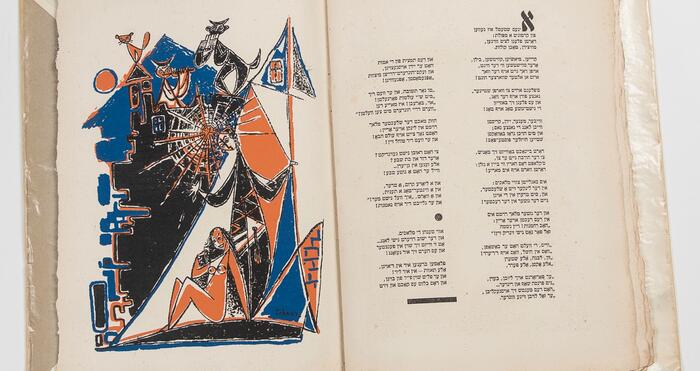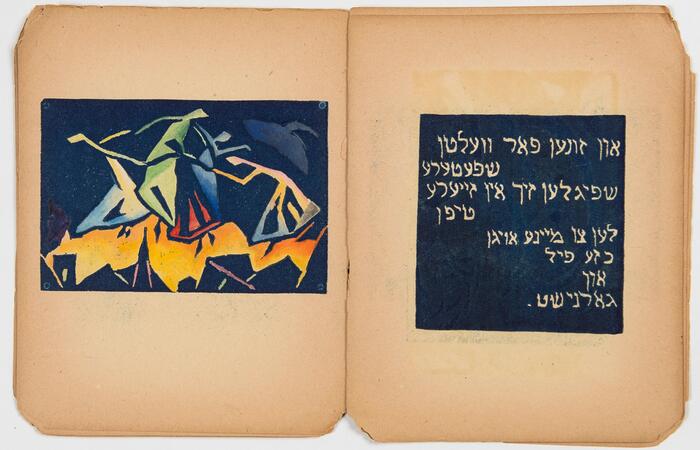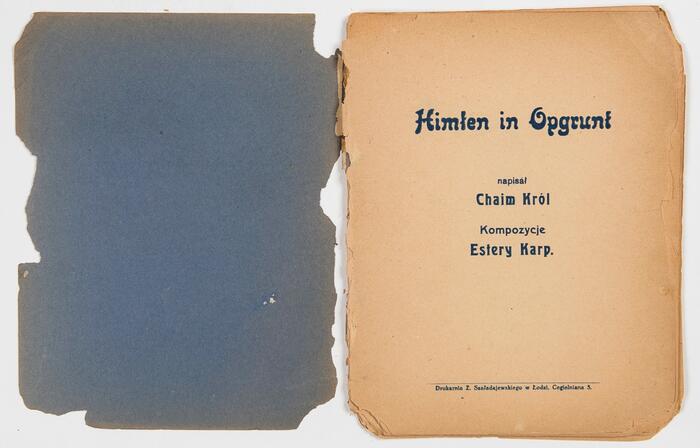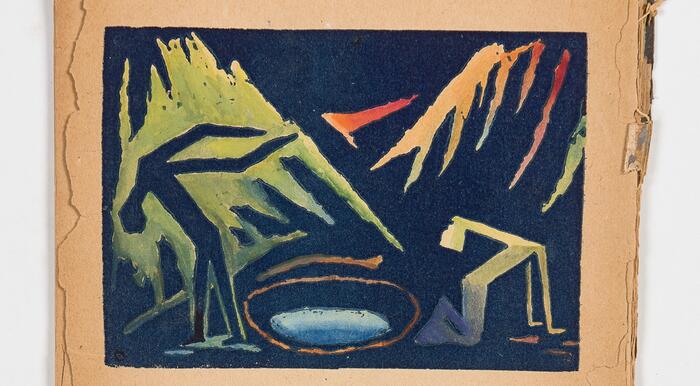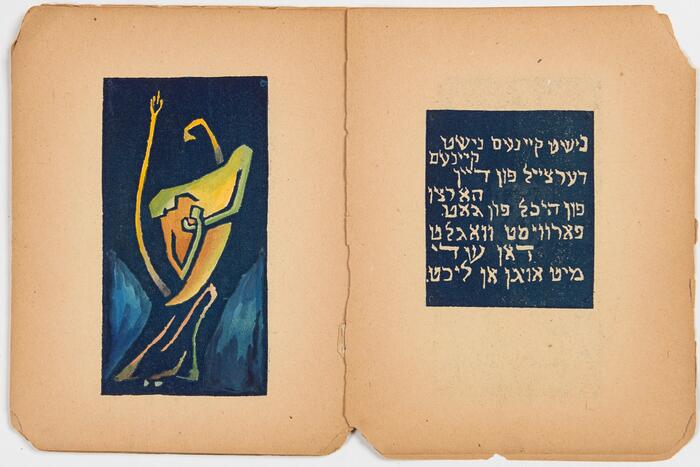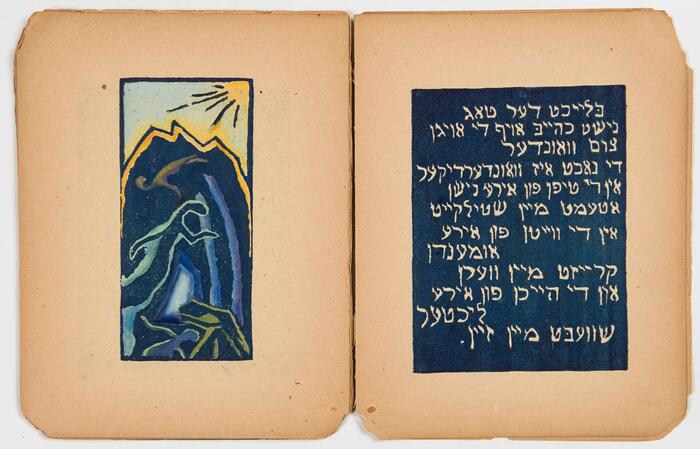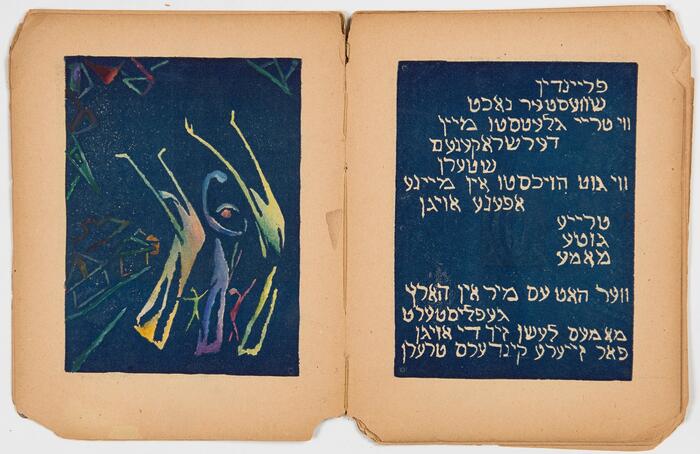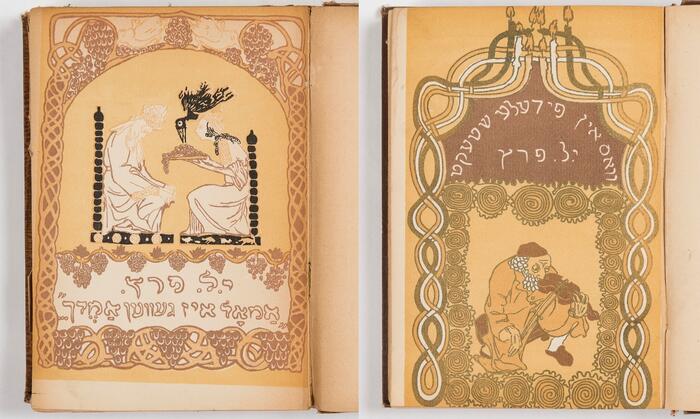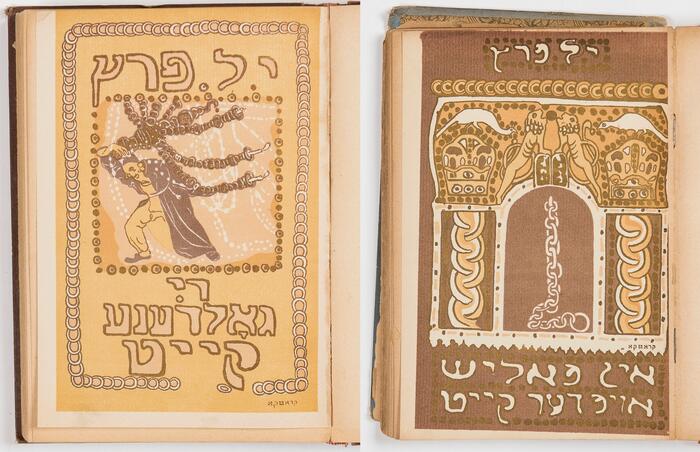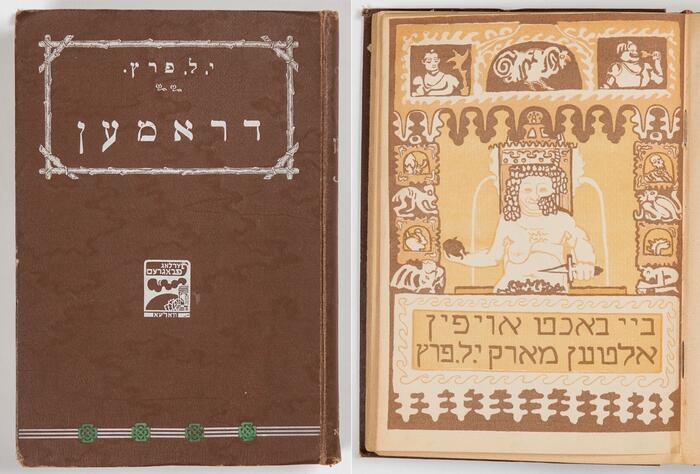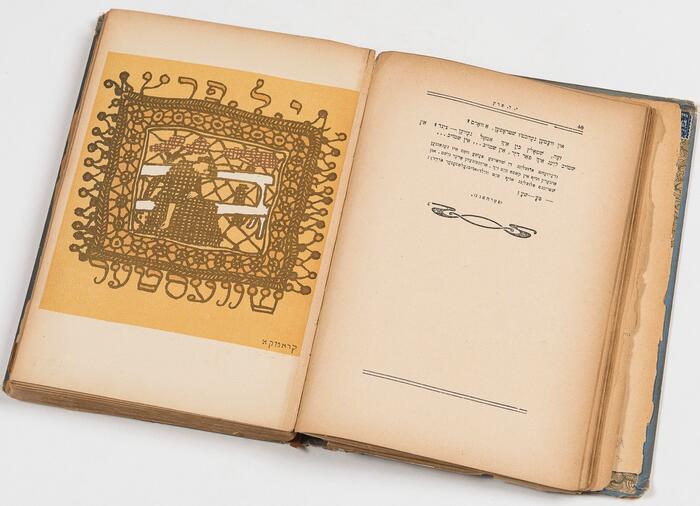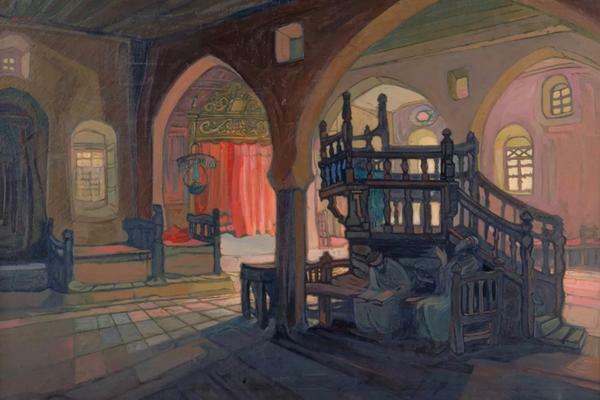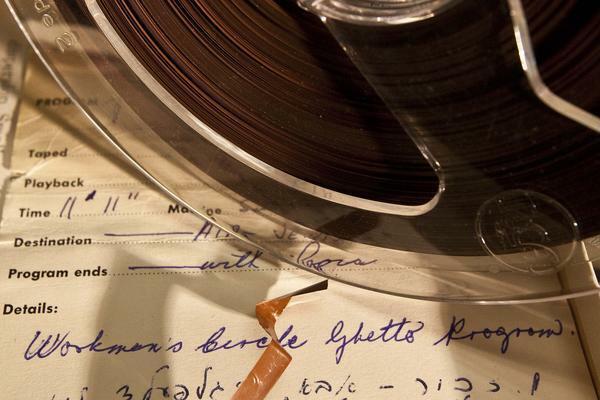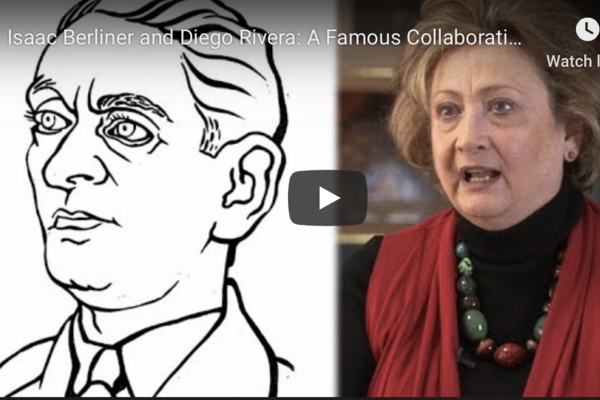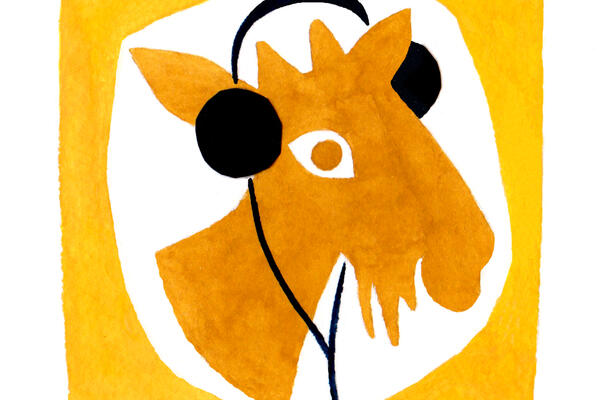Yiddish Illustrations: "From Chagall to Diego Rivera"
A Personal Top Ten by David Mazower
Some of the greatest artists of the twentieth century left a remarkable legacy of little-known but sumptuous Yiddish illustrated books. David Mazower, the Center’s bibliographer and editorial director, recently revealed his personal top ten in his talk, “From Chagall to Diego Rivera,” which he presented at the Yiddish Book Center's spring Community Open House on April 29.
Each week, we'll reveal one of David's top ten Yiddish illustrated books from his talk, beginning with number ten and working down to number one.
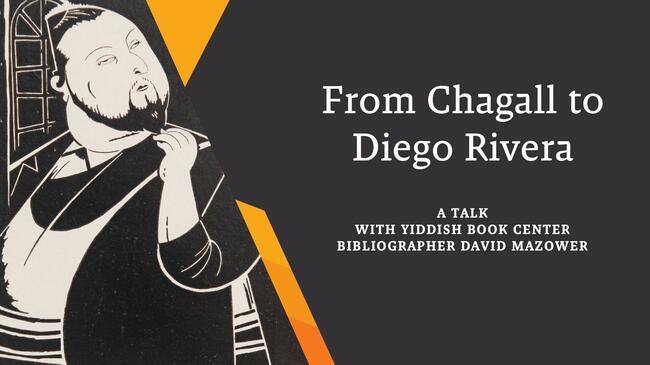
Number 10
Uriel Birnbaum (1894–1956) / Illustrations for Jose Rabinovich: Konventizshes (Tenements) / Buenos Aires: Farlag nayvelt, 1928
Jose (Yosef) Rabinovich was a 24-year-old Polish-Jewish immigrant to Buenos Aires when he published Konventizshes (Tenements) in 1928. A slim, pocket-sized book of poems, it explores the mix of alienation and wonderment that so many new immigrants felt on encountering a country so different from their homeland. The artist Uriel Birnbaum was a prolific illustrator of both Yiddish and German language books. His cover image addresses the importance of sunlight to poor Buenos Aires tenement residents whose dwellings were often shrouded in a twilight gloom. Inside, Birnbaum’s wonderful illustrations capture the gritty reality and nostalgic flashbacks of immigrant life in a country Rabinovich termed a land fun zun un shand—a country of sun and shame.
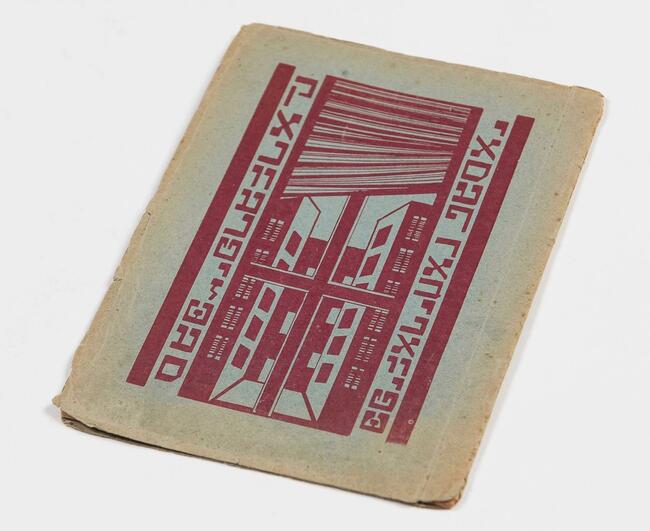
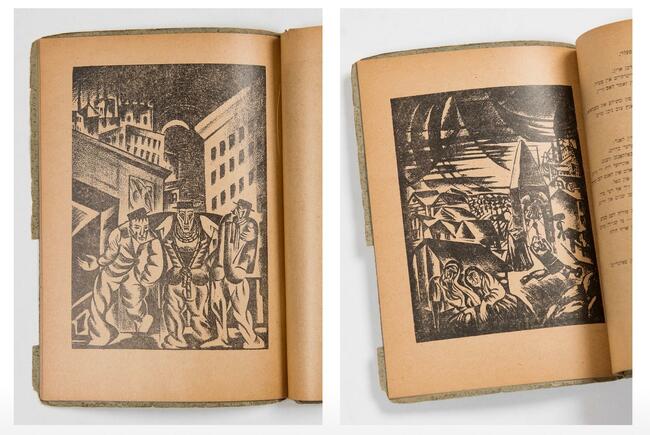
Number 9
Arthur Kolnik (1890–1972) Illustrations for Eliezer Shteynbarg Mesholim (Fables) vol 1 Czernowitz: Komitet af aroystsugebn eliezer shteynbarg’s shriftn, 1932
And
Mayselekh (Little Stories) vol 2 Czernowitz: Komitet af aroystsugebn eliezer shteynbarg’s shriftn, 1936
For me, this is one of the great artist/writer partnerships. It also takes us to one of the storied regional centres of European Yiddish—the town of Czernowitz, today Cernivtsi in western Ukraine. Yiddish culture flourished in Czernowitz between the two world wars, and this book represents the peak of its creativity. Kolnik was a master print-maker, Shtaynbarg a renowned writer of elegant crystalline fables. Both were central figures in Czernowitz’s vibrant Jewish cultural life. The full range of Kolnik’s artistry is on display in these two volumes, from full-page expressionist woodcuts to playful decorative scenes wrapped around individual letters. Kolnik went on to collaborate with other great Yiddish writers including Itzik Manger and Avrom Sutzkever.
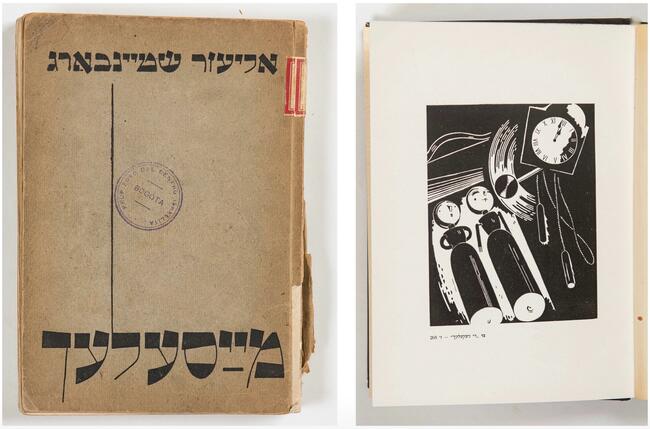
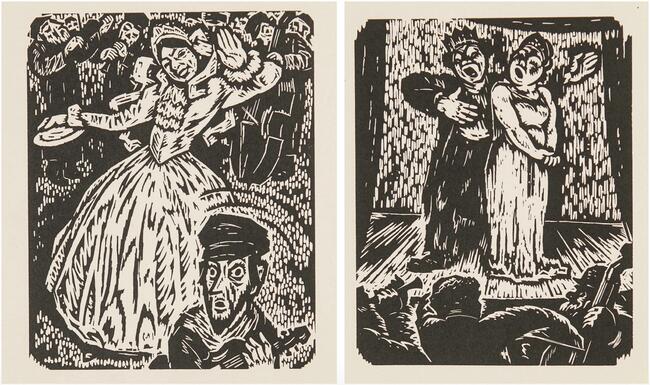
Number 8
Marc Chagall (1887–1985) Illustrations for Abraham Liessin: Lider un poemes (Songs and Poems), 3 volumes / New York: Forwards Association, 1938
Chagall was a central figure in the heady years of European Yiddish modernism in the 1910s and 20s. In 1925 his autobiography, My Life, appeared in Yiddish in the New York monthly Di Tsukunft (The Future)—a socialist journal spanning literature, politics and popular knowledge. The publication cemented a friendship between Chagall and the journal’s editor, Abraham (Avrom) Liessin, a Talmudic prodigy turned labor activist and orator. Liessin was also a celebrated poet, and his collected poems appeared in three volumes in 1938, weeks after his sudden death. The 34 full-page illustrations by Chagall are among the artist’s most lyrical and nostalgic work in the book arts. Exquisitely detailed, but softer in tone than his earlier avant-garde graphics, they rank among his finest illustrations.
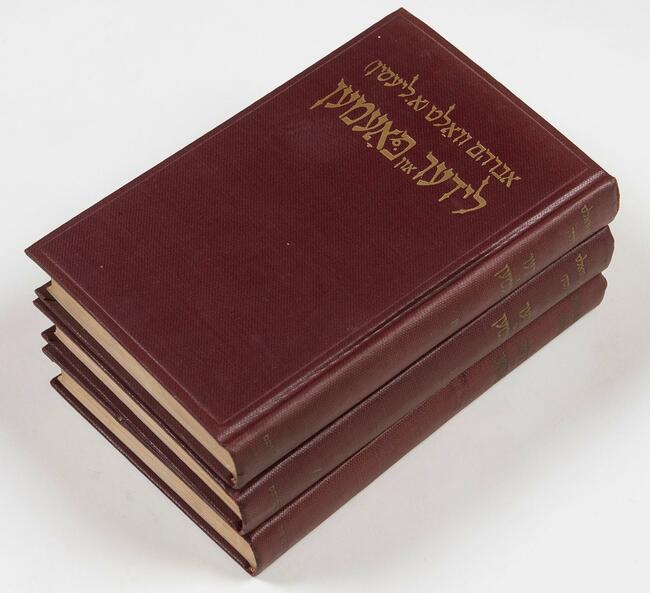
Number 7
Todros Geller (1889–1949) and other Chicago artists / Illustrations for Antologye Mitvest-Mayrev, 1932–1933 (The Midwest—West anthology, 1932–1933) Chicago: farlag Tseshinski, 1933
Yiddish writers and artists in Chicago, Detroit, and Los Angeles adopted their new hometowns with a passionate intensity and this anthology glows with their fervor. Over twenty poets and five artists join forces in its pages in a proud celebration of American Yiddish regionalism. Skyscrapers, nature, urban poverty, domesticity, Jewish peddlers, Chinese laundry men, and black Americans—the poems cover all these and more. But the anthology is prized above all for its artwork by Todros Geller (1889–1949) and Mitchell Siporin (1910–1976)—two leading Chicago printmakers. Siporin’s stunning red and black title-page captures the themes of the book in a masterly blend of images and typography. Geller riffs on the same theme on the next page, which lists all the book’s contributors. It’s like a Chicago artists’ version of a Harlem piano contest—a friendly rivalry which pushes both men to the summit of their artistry.
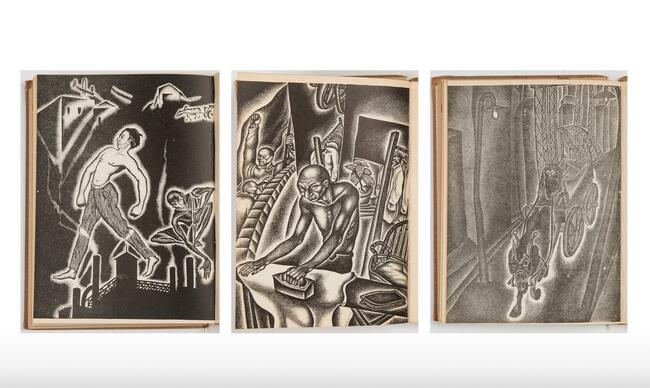
Number 6
Ula Palusinska / Illustrations for Jehoszue Kaminski: Mayn alef beys (My A, B, C), Krakow, Zydowskie Stowarzyszenie Czulent, 2012
There are at least 10 reasons why I love this modern, LP-sized Yiddish ABC: 1) It’s a glorious take-your-breath-away stunner—sumptuously illustrated, designed, and produced; 2) Ula Palusinska, the artist, is young, Polish, and supremely talented; 3) It won top prize at the 2014 Bologna Ragazzi Awards—the Oscars of the children’s book world; 4) It’s a wonderful blend of tradition and modernity, using texts by Yeshoshue Kaminski (1884–1958), an unsung Yiddish children’s educator and poet; 5) Each double-page layout is perfectly balanced; 6) The colour palette is beautiful and distinctive; 7) It reminds us that some of the smartest Yiddish scholars today are in Poland; 8) It’s an international collaboration, funded by foundations and individuals in Poland and the United States; 9) It was produced by a Krakow cultural organization called Cholent ("Czulent" in Polish); 10) It symbolizes faith in the regenerative powers of Yiddish, and a new generation of Yiddish speakers.
The book (along with other Yiddish children’s books in the same series) is free to download from the Czulent Association website.
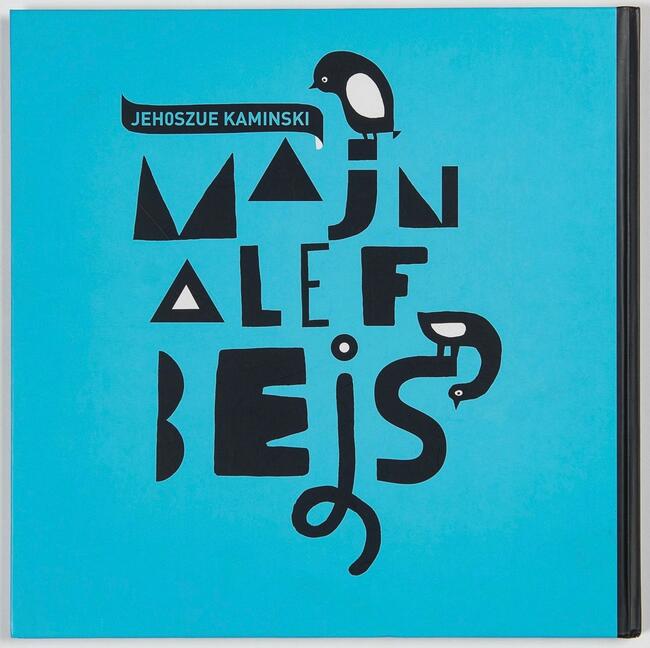
Number 5
Yosl Kotler / Illustrations for Herman Gold: Mayselekh (Stories), New York: Farlag idish lebn, 1928
Yosl Kotler was a master of the stylized grotesque. He was also an extraordinarily accomplished draftsman, able to stretch, shrink and contort a line into an endless kaleidoscope of forms. Kotler is one of the great American artists of modern times, but has never achieved recognition as such. Perhaps because he worked almost exclusively in the Yiddish-speaking milieu, and mainly among Communist circles. Or because he spread his abundant talents in so many directions, including painting, illustration, cartoons, theater design, poetry, fiction, and puppetry. Kotler was fifteen and an orphan when he arrived in America in 1911. He thrived primarily as an illustrator and puppeteer, teaming up with Zuny Maud, an equally multi-talented fellow Bohemian, to create a cult puppet theater in 1925. Kotler was driving to Hollywood hoping to make a puppet movie when he died in a car crash in 1935. His funeral brought 10,000 people onto the streets of New York. Author Herman Gold was another extraordinary Lower East Side character, described by memoirist Reuben Iceland as "the weaver of the weirdest, wildest word plays." In other words, Gold’s stories and Kotler’s artwork are the perfect match.
Number 4
Diego Rivera / Illustrations for Yitzkhok Berliner: Shtot fun palatsn (City of Palaces) Mexico City: Der veg, 1936
Diego Rivera is widely known both as a towering figure in Mexican art, and as the lover of Frida Kahlo. Less well known is his attachment to his Jewish identity. Rivera’s ancestry was a melting-pot that he believed included Spanish Jews who had converted to Catholicism at the time of the Inquisition. In a speech he gave towards the end of his life, he announced: “My Jewishness is the dominant element in my life. From this has come my sympathy with the downtrodden masses which motivates all my work.” Rivera’s many Jewish friends included Leon Trotsky and the poet Yitskhok Berliner. Berliner emigrated from Poland to Mexico in 1923 and made a living selling images of saints. Shtot fun palatsn (City of Palaces), a collection of poems, was one of the first Yiddish books written in the country to focus on local themes—the forgotten people of Mexico City’s back alleys, the jarring disorientation experienced by new immigrants, and the power of the church. It’s the only Yiddish book Rivera illustrated, and it features a series of stunning full-page ink sketches, as well as his fine portrait of Berliner.
Number 3
Pinchas Shaar / Illustrations for Y. L. Peretz: Monish: poeme, Paris: Kultur-department baym “dzshoynt” un alveltlekhn yidishn kultur-kongres, 1952
The classic Yiddish writers Peretz and Sholem Aleichem have continued to inspire artists and illustrators long after their deaths. This book is a prime example of that; it was issued in Paris in 1952, the centenary of Peretz’s birth. The poem, Monish, launched Peretz’s career as a Yiddish writer in 1888. Its theme—a pious Jewish youth wrestling with the temptations of the flesh and, by extension, the attractions of secular culture—held its relevance for generations. But even this iconic text rarely received the deluxe treatment it gets here. Pinchas Shaar, the artist, survived the Lodz ghetto as a teenager, regained his strength in a German sanatorium, and made his way to Paris where he resumed his art studies. He illustrated many Yiddish books but this is his masterpiece. Center stage are the two lovers—Monish, the yeshiva prodigy, eyes down, deep in thought, and the voluptuous free-spirited merchant’s daughter who steals his heart. Piety, lust, and transgression play out in a palette of muted blue, grey, green, and brown, with flashes of hot yellow. Spider webs and Shaar’s trademark menagerie accompany the ill-fated pair. From a total edition of 450 numbered copies, 65 oversized books were printed on the creamiest, most seductive, Ingre fine art paper—the perfect embodiment of the pleasures of the good life.
Number 2
Ester Karp / Illustrations for Chaim Krol: Himlen in opgrunt (Heavens in the Abyss) Lodz: Farlag Achrid, 1921
I came across this slim book in our vault and hesitated to open its chipped, brittle pages, for fear of damaging them further. But I’m glad I did. The colors inside glowed and flickered across full pages and small vignettes, creating a world of dreamlike, fantastical images. I was intrigued. What was the book? Who was Ester Karp? Why hadn’t I heard of it? The answers turned out to lie in the little-known story of a group of avant-garde Jewish writers and artists in Lodz called Yung Yidish (Young Yiddish). The group formed in 1918–19 around the poet Moyshe Broderzon, and the artists Jankel Adler and Marek Szwarc. But women were also closely involved in the group. Ester Karp’s father and five sisters were all studio photographers, but Karp studied art in Vienna, and spent a few years in Lodz before emigrating to pursue painting in Paris. Her collaboration with the poet Chaim Krol turns out to be one of a trilogy of stunning art books produced in Lodz in 1921. All are illustrated by young Jewish women artists in a jewel-like finish achieved by adding water color on top of linocut prints. All feature original calligraphy by the artists—Ida Broyner, Ester Karp and Dina Matus—and all are extremely scarce today, surviving in only a handful of copies. They represent a lost chapter of Yiddish modernism, a counterbalance to a predominantly male narrative, and a hidden treasure of modern Jewish culture.
Number 1
Szymon Ber Kratka / Illustrations for Y L Peretz: Dramen (Dramas) Warsaw: Farlag progres, 1909
Hands up if you’ve heard of Szymon Ber Kratka, aka Bernard Kratko. Anyone? I thought not. And yet, for a few years before the First World War, there was no more important visual artist in the field of modern Yiddish culture. Kratka knocked on the door of Peretz’s apartment in the center of Warsaw one day around 1909. “He arrived all the way from Jerusalem,” recalled the memoirist I J Trunk, “carrying with him the smell of Turkish taleysim (prayer shawls), tefillin, King David, and the Western Wall of the Temple.” Still only in his mid-twenties, Kratka was steeped in Jewish iconography, Jewish mysticism, and the visual culture of the Middle East, and he captivated the Peretz circle instantly. He designed tombstones and exhibited sculptures and paintings, but his single most important commission was this extraordinary series of cover illustrations for the 1909 edition of Peretz’s plays—a unique blend of influences from traditional Judaism, art nouveau, and Oriental design. Kratka’s work is the bridge between the nineteenth century Yiddish book—tiny pamphlets in plain covers printed on poor quality paper—and the world of the modern Yiddish illustrated book. And yet, with the shining exception of Polish art historians like Jerzy Malinowski and Renata Piatkowska, few scholars have studied him. That’s a shame. He was a brilliant, visionary Jewish artist and intellectual who produced what is probably the single most important illustrated Yiddish book of the modern era.
An Interview with David Mazower
Following his talk, David sat down with Lisa Newman, the Yiddish Book Center's director of communications, to answer a few questions about the books and artists he chose and the process of narrowing down his selections.
Lisa Newman: When you set out to choose your top ten, did you already have that list in your head or did you have some back and forth “conversations” with yourself as you whittled it down? Which I’m certain you did—whittle it down, that is.
David Mazower: It was a tough, brutal, survival-of-the-fittest process! I had dozens of books that I wanted to include, so I knew I had to set myself some rules. I decided to focus on books rather than art albums, to reflect a wide geographic spread, and to choose only books in our collection. That helped a bit, but it was still painful to exclude so many wonderful artists. And about a third of my choices are books I came across in the time I’ve been working here.
LN: I think it’s safe to say that most readers assume an illustrated book is a children’s book, but not so for many of these Yiddish titles. Any thoughts as to why illustration was so prevalent in Yiddish works?
DM: One reason is that there’s definitely a shared affinity between Jewish artists and Yiddish writers in different cities at different times. Avant-garde groups like Di Yunge in New York, Yung Yidish in Lodz, the Yung Vilne group, the Kultur-Lige in Eastern Europe, even Peretz’s circle in Warsaw—all of them saw art and literature as equally important, almost inseparable. Writers and artists sat at the same café tables and knew and respected each other’s work. But even more than that, remarkable numbers of creative figures in the Yiddish-speaking world were talented in both areas—artist-writers like Chagall, Yonia Fain, and Saul Raskin, or writer-artists like Moyshe Leyb Halpern, Sutzkever, and Celia Dropkin.
LN: A few (or one in particular) of your favorite artist/writer collaborations?
DM: That’s an almost impossible choice. Artur Kolnik’s wood-cuts for Eliezer Shtaynbarg’s two books of fables are one of my favorites—a high point of Yiddish modernism in interwar Czernowitz. But my all-time favorite has to be the set of full-page color illustrations produced by Szymon Ber Kratka for the edition of Peretz’s plays published in Warsaw in 1910. It’s remarkable for so many reasons. Kratka was an unknown sculptor/artist just out of art school, whereas Peretz was about 60 and at the height of his fame. But somehow Peretz sensed that Kratka could produce the perfect visual counterpart to his own unique blend of mysticism, modernism, and Jewish tradition. Not so much illustrations as visual analogies, Kratka’s work fused synagogue iconography with Biblical motifs, art nouveau influences, and Oriental and Jewish textile design. The great memoirist Y.Y. Trunk called Kratka a “luminous artistic personality.” He took Warsaw by storm from 1910 to 1915, then he moved to Russia and became just another socialist realist artist in the USSR.
LN: Is there one amazing rare book that you’ve found in our collection by chance?
DM: There is! It’s a glorious but almost totally unknown book called Himlen in opgrunt (Heavens in the Abyss). This is Lodz, 1921—high expressionism, and a world in ruins after the 1914–18 war. Somehow, in these desperate times, a group of Yiddish poets and young women artists produced three exquisite hand-printed limited-edition art books. I stumbled across Himlen in opgrunt in our vault and couldn’t believe what I was seeing. The illustrations dance and flicker on the page in jewel-like colors, looking as modern today as they did in 1921.
LN: Who were the illustrators?
DM: The three artists—Ester Carp, Dina Matus, and Ida Broyner—were all part of the Yung Yidish group in Lodz. Actually, there were several other women artists in the group at the same time, but the best-known figures were all men: artists like Jankl Adler, Henryk Berlewi, Marek Szwarc, and the Bohemian playwright/poet/artist Moyshe Broderzon. Perhaps that dynamic made the women bond more closely together. Also, the women members of the group seem to have been exceptionally multi-talented, branching out from painting and illustration to theater and costume design, jewelry, batik, and ceramics. Sadly, almost all of their work from the 1920s and 30s is lost. But these three extraordinary books have survived, and each one is a masterpiece.
